Since I don’t have a guest post today, I thought I would put in one of the A Writer’s Guide articles I received since this series is going to be put on hold for a while, I wanted to share the last few I had.
This is part of the series of blog articles called “A Writer’s Guide…”. The purpose of this series is to give detailed information on skills and occupations that writers can use when creating characters.
Check out today’s article by author Jaq D Hawkins is on Carnivals and Circuses.
Carnivals & Circuses
by Jaq D Hawkins
I love stories about carnivals and circuses, not least of all because I spent some time with the carnival in my youth.
Both of these travelling entertainments create a certain mystique as a setting, but although there is some crossover in slang and other elements, they are very different and I’ve put down books for getting it wrong, attributing terms or situations to one setting when they are specific to the other.
For example, referring to a group of clowns as ‘carnies’ or mentioning a Big Top at a carnival, where such a thing doesn’t exist.
A writer must also keep in mind that the societies within these entertainment fields have progressed over time so that a setting in the 1940s would be very different from a contemporary story, in terms of slang, rides or other shows available and after-hours society, even food.
So, taking some of my own experience and the lessons I picked up from old-timers, let’s have a look at the basics:
What happens in a Carnival
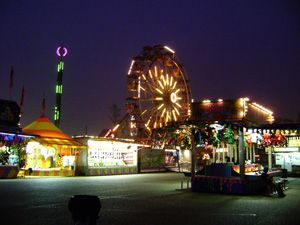
Originally called a Traveling Carnival in the USA in 1893 and termed a ‘Funfair’ in the UK. A carnival is all about rides and games, called ‘joints’ by the carnies (carnival workers.)
Sometimes a carnival also had sideshows, especially in the first part of the twentieth century.
In the early 1900s, a carnival grounds might have games of chance which were sometimes rigged, freak shows, wild west shows and burlesque shows along with a few basic rides.
By the second half of the century, the games became regulated so that while a particular game might require knowing the trick to it, any spot inspections from local law enforcement would find them at least possible to win.
In fact, the jointies (people who run the joints, or games) intentionally see that someone wins periodically so that marks (customers) nearby will witness their success and be more easily enticed to have a try.
Sometimes a carny on a break will stop at a joint and pretend to be a mark and win a prize, which gets returned later. It’s all for show.
Freak shows also came under regulations so that live people no longer get put on display. Usually the ‘freak show’ is a small tent among the other joints and sideshows with photographs of deformed people from the past who once fell victim to exploitation.
I came across one actual animal freak show that had things like a five-legged horse, a two-faced goat and other deformed animals, but they were well cared for. This show was independently owned, as most shows of this nature would be.
Rides have also developed over time. In the early 1970s, a hammer ride was as scary as it got. You sat in a bullet-shaped cage at the end of a long arm and it rotated sideways while the central arm spun forward, back, forward again, and eventually all the way around.
A modern carnival setting might include thrill seeking rides that spin or drop riders. More traditional rides include a tilt-o-whirl, usually referred to just as the tilt, a Ferris wheel (Big Wheel in the UK) and a carousel (roundabout in the UK). Several children’s rides will usually be available on carnival grounds as well as bigger rides, popular with teenagers.
The Midway is laid out so that when you enter the carnival grounds, you’ll most likely walk to the right and follow the row of joints to get to the rides at the back. Then more joints on the return path will tempt you on the way out.
Naturally, the positioning of the joints can be competitive, but ultimately the carnival bosses decide the layout.
A few rides in a parking lot or the edge of a field might belong to just one company or ‘show’, but if it’s 8-10 or more, chances are more than one show has placed rides and joints on the spot.
While rides and joints will usually have someone regularly in charge of them, or perhaps even be independently owned, people frequently come and go or change shows. Local young people will often be hired on as ‘green help’ and some will end up leaving with the carny. Others collect their money in cash at the end of the week and go home.
There are certain rules that aren’t healthy to break. ‘Rehashing’ tickets, pocketing collected tickets to re-sell, is a big one. People can get hurt.
Food in the Carnival
Carnies don’t normally have communal meals except when someone with a car or the cab of a truck unhitched from the ride it pulls occasionally takes a group into town to go to a cafe.
Many carnies stay with the same show for years and play the same spots every year, so they know where the cafes near the carnival grounds are to be found in specific towns. A quick terminology digression: a carnival grounds is anywhere a carnival sets up. A fairgrounds is a specific county-owned location where annual fairs happen.
During the day, most carnies eat from the food vans on the carnival grounds. Traditionally these had predictable fare; burgers, hot dogs, BLT sandwiches, corn dogs, plus popcorn, cotton candy, soda and possibly other sweets. In more modern times, carnival food has taken on the weird.
It started out with funnel cakes and large pretzels, passed through macaroni and cheese cones and spaghetti on a stick, then on to fried beer and bizarre combinations of different foods and desserts piled onto waffle cones. Food was still of the basic variety in the 1970s. Funnel cakes started showing up soon after.
Many food vans are independently owned, but the carnival also supplies some of their own. If a carnie buys food from one of these, an old tradition is to pass money in a fist so that the marks can’t see how much you’re exchanging or how much change you got back. Courtesy discounts are subjective.
The show does not supply food. Carnies are on their own and can choose to live on carnival food or go to local cafes for real food. Most don’t practice great nutrition. The exceptions are carnie families who bring the kids along in camping trailers with cooking facilities. These tend to be a minority.
After Hours
The social structure of the carnival is divided into two main groups: the ride jockeys (called pig-irons by old-timers) and the jointies.
The ride jockeys tend to be muscular as they perform maintenance on their ride and dismantle them on slough night (slough pronounced to rhyme with wow), the final night on the spot, when everyone stays up all night preparing to travel first thing in the morning.
Amphetamines tend to feature. For the jointies, slough night is usually a matter of boxing up prizes and loading a truck, along with the stall which comes apart, not unlike a camping tent.
Misogyny was still the norm in the 1970s. A woman who wasn’t attached to a man was viewed with suspicion by the other ‘old ladies’ and likely to be subject to unkind rumours. Women who sell tickets were also a separate class from ride jockeys and jointies. They might socialise with either or have a partner in one camp or the other.
Within this structure and after the carnival was closed for the day, the evening was party time. The person with primary responsibility for each ride would perform any necessary maintenance as soon as closing time was decreed by the boss and word passed down the line, then their time was their own.
Some would go into town for food while others would have eaten before the food vans closed. Groups gathered outside or inside large truck trailers and beer and wine were passed around. Many people slept inside the structure of rides or in their joints, apart from slough night.
I’ve slept in the inner circle of a carousel, in a funhouse (that was fun when someone rolled over and triggered a scare) and on top of boxes of wine glasses for a glass pitch in the back of a truck.
Sometimes we slept out in the open, taking care not to sleep on a patch of fairground lawn where a truck might arrive during the night. The bosses usually had a trailer to sleep in.
And yes, occasionally we turned on a ride in the middle of the night to enjoy while impaired with alcohol. I sometimes imagined that like as a carny must be similar to living with a large biker gang.
What happens in a Circus

A circus is all about performance. Traditionally tents are erected and the main tent where performances occur is the Big Top. In a small circus, this will be the only tent.
The well-known Ringling Bros. and Barnum & Bailey Circus is the exception in that after about 1956, they performed in large, permanent auditoriums usually used for concerts and sports events. They still referred to it as the Big Top. I know this because I was there more than once as a child.
They set up three rings within the performance space and had rather a lot going on all at once, always putting the most important acts in the center ring.
To me, I think Ringling Brothers lost much of its charm as a result of this. Years later when I attended a small circus with a single ring in an old-style tent, it was far more atmospheric.
Old circuses sometimes had sideshows. The bearded lady, a contortionist known as a geek, a sword swallower are all fairly well-known possibilities, but by the 1950s, they had become the stuff of cartoons.
You still might get the occasional ‘Gypsy’ fortune teller in either a carnival or a small circus, but most of what goes on for the audience is focused on performances in the Big Top.
Food in the Circus
Circus food is still much more traditional than the carnival. Performers and crew are given vouchers or tickets for the food tent and eat communally. Three square meals a day were served, usually of high quality.
Ringling Brothers were known for exceptional meals made by a qualified chef, termed a ‘pie man’. Circus work is hard and like an army, the circus travelled on its stomach.
During the Great Depression, regular hearty meals including meat, potatoes, vegetables and even sheet cake were motivation for joining a circus.
A lot of care was put into sending crew ahead to organise meat with local butchers and vegetables from greengrocers, as well as animal fodder, wherever the circus was to play next.
When Ringling Brothers started using auditoriums, the old cookhouse tent was replaced with a ‘pie car’, which was a railcar that served sandwiches and coffee, and later a food truck or trailer as would be used for a smaller circus.
An excellent article on feeding a large circus can be found at JS Online.
For a small family circus, there’s room for imagination. Feeding 300 performers and working men are very different than a company of a dozen people.
After Hours
Performers of any kind need to rehearse. When the circus is closed, a lot of work takes place. Cleaning up, caring for animals, and for the performers, time to practice or work out new routines.
Cirkys are far more likely to raise families within the show community. Children learn skills or are sent on errands and with communal meals, socialising is naturally closer-knit, as it might be in a small town where everyone knows everybody.
Circus families are far more likely to stay in the circus over several generations. We’ve all seen movies where someone on the run from the law hides in a circus, usually hiding behind clown make-up. That’s pure Hollywood.
Clowns learn to be clowns either directly from their own circus family or in clown school and an outsider would have to audition for such a role. Criminals on the run are far more likely to join the carnival, where nobody presses for real names or asks too many questions.
Behind the scenes at a circus is in some ways much like being behind the scenes on a stage play.
Costumes are designed, made, fitted and inspected before the performer goes on, rehearsals are a daily routine and creating sets or other visuals for the audience is carefully planned and constructed.
Circus life is hard work! Some people will have multiple jobs, especially children still learning performance art who might sell food or souvenirs part of the time.
Carnival and Circus Terminology
There are many websites listing glossaries of circus and carnival slang, but the writer must be aware that the majority of terms found on these sites fell into disuse after about the 1940s.
The terms I’ve included in this article survived at least into the 1970s when I spent several months travelling with the carnival in California. Some terms might also be regional, especially between countries. For example, in the UK, cotton candy is called candy floss.
Writer’s can best serve their purposes by keeping specialist terms to a minimum, though an old-timer might use more slang.
I have to admire how Stephen King handled the differences in Joyland, by having an amusement park (stationary entertainment) owned by an old-timer who had worked for both the circus and the carnival during his life. He could get away with referring to a mark as a rube, an old circus term that had some carnival crossover before 1950.
Note that I refer to being “with the carnival”. I actually worked for three different shows but it all counts under the one reference. It’s similar for someone who is “with the circus”, even if they’ve moved from one company to another.
Animals and Performance Bans
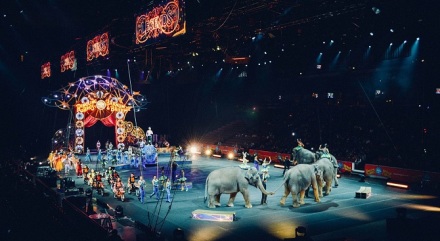
It would be unusual to find animals travelling with the carnival. I never even saw anyone with pets. The animal freak show I mentioned above was one of the few rare exceptions.
Animal acts primarily come up in a circus setting, but it’s an area where the author needs to be aware of their era and location especially if dealing with “exotics”, large cats, elephants and any non-domesticated animal.
40 countries have recognised the inability of circuses to properly care for wild animals and in the U.S., there are seven states and 149 other localities (cities, towns, and counties) in 39 states that have passed various restrictions or bans involving the use of wild animals in circuses.
A list of those can be found here, Four Paws, I highly recommend researching the localities in your setting for when these bans came into practice.
Many of these regulations are relatively recent so if your story is set in the past, there is more elbow room. In the 1940s, it was a free-for-all. The UK is still struggling to ban wild animal acts, targeting 2020.
Most exotic animals in the circus live in cages the size of a truck or if they were with Ringling Brothers, a railroad car, only gaining more exercise room in the performance ring during rehearsals and actual performances.
Ringling Bros. and Barnum & Bailey Circus actually shut down in 2017 due to spreading animal regulations preventing them from performing their main acts in many localities.
Getting information on current laws for a specific location is easy, but I found trying to ferret out when laws came into practice a real challenge. One way around this is to date your story at least before 1982.
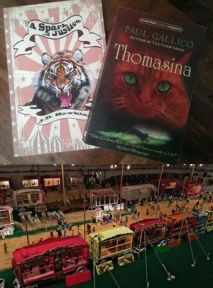 A couple of good stories sitting on my own bookshelf that accurately depict animal acts in their era are A Spark of Justice by J.D. Hawkins (no relation), which is a light Mystery set in the 1970s, and Thomasina by Paul Gallico, which was the source material for the film, The Three Lives of Thomasina, set in Scotland in the early 1960s.
A couple of good stories sitting on my own bookshelf that accurately depict animal acts in their era are A Spark of Justice by J.D. Hawkins (no relation), which is a light Mystery set in the 1970s, and Thomasina by Paul Gallico, which was the source material for the film, The Three Lives of Thomasina, set in Scotland in the early 1960s.
These bring to bear an important point; small circuses rarely have many animals, especially exotics. A Spark of Justice takes place within a medium-sized circus that has a few big cats, but no elephants or other exotics.
The very small circus in Thomasina has just one dancing bear. I’ve actually attended a small circus that had a camel and a donkey. That’s it. Animals are expensive and take extensive care!
Keep It Real
It isn’t only people who have worked for the circus or carnival who will spot it if you mix up your settings. Anyone who has attended these entertainments is going to see something out of place if you’ve got a Big Top on your carnival grounds or start talking about clowns.
Many towns and cities have some version of a fair set up at least once a year and if you want to write a story in that setting, a visit to the site is well worthwhile.
Similarly, circuses still travel and perform, both large and small, albeit without as many animal acts as once typified performances.
Attend one, watch an old movie set in a circus, or read a book like The Advance Man: A Journey Into the World of the Circus by Jamie F. MacVicar if that’s the setting you want to use. It’s worth getting the details right to give your readers a feeling of life behind the scenes, whether it is a carnival or a circus you choose to write about.
~ ~ ~ ~ ~ ~ ~ ~ ~
About Jaq D Hawkins
Jaq D Hawkins is the author of several Dark Fantasy novels, which include Dance of the Goblins, Demoniac Dance and Power of the Dance.
There is a combined volume of the full Goblin Trilogy available. Her most recent release (August 2019) is a comedic science fiction novel, an adventurous farce through time and space called The Chase for Choronzon.
She has also written the Airship Mechanoids Steampunk series which begins with The Wake of the Dragon and will continue with The Winds of Winter Storms in 2019 and a third volume that takes the series into the realm of Khempunk due out in 2020.
Information on all fiction titles can be found through her website.
I hope you liked this article and if you have any questions for Jaq, please drop them in the comments below. Check out all the current “A Writer’s Guide” articles on their new page for easy access.
Do you have knowledge of a condition, skill or occupation you could write about?
~ ☆ ~ ☆ ~ ☆ ~ ☆
Happy writing

Ko-Fi ☆ Facebook ☆ Twitter ☆ Instagram ☆ GoodReads ☆ Pinterest ☆ LinkedIn
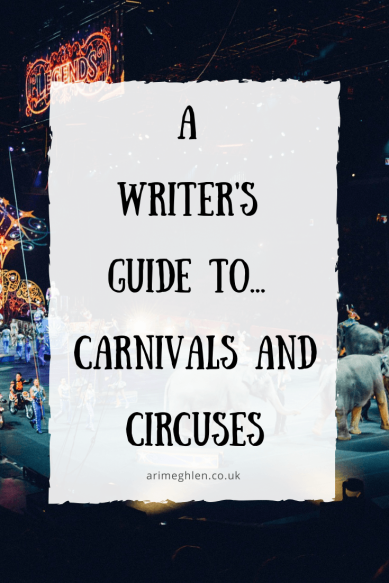
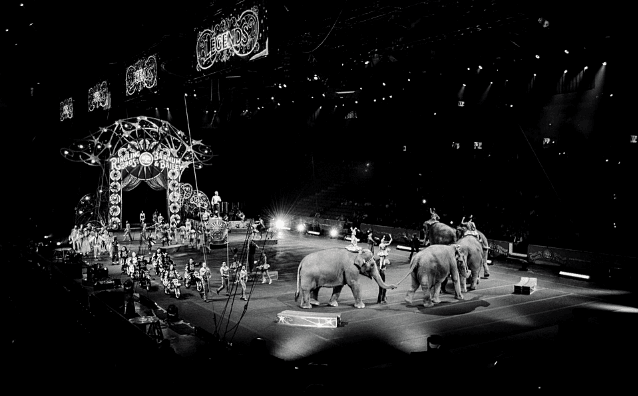

Bread and Circuses by Kerry Greenwood was a book I enjoyed for its portrayal of circus life. 🙂
Awesome thanks for sharing, Jaya